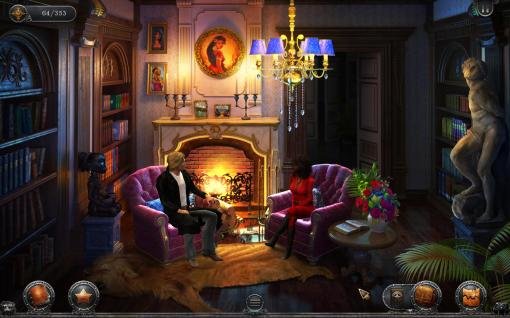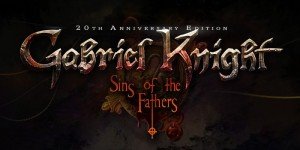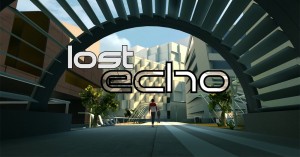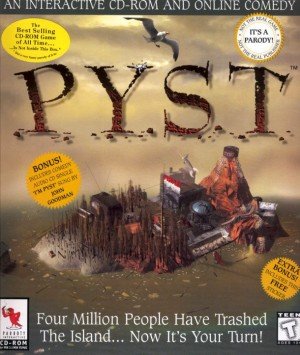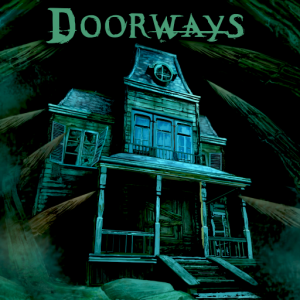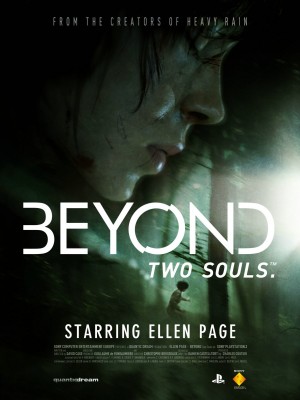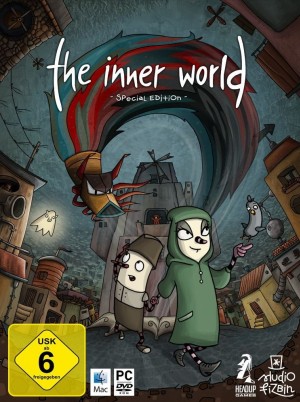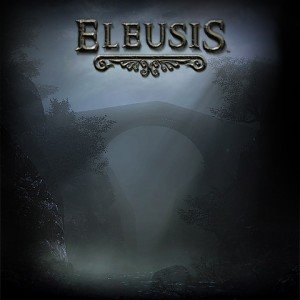Gabriel Knight: 20th Anniversary Edition hands-on archived preview - page 2
Gabriel Knight is a tormented man. A struggling writer and bookstore owner by day, his nights are haunted by nightmares streaked with glimpses of raging flames and dripping blood, a leopard-faced woman and a horrified man, and himself – lynched from a tree. Battling the exhaustion of his restless nights, he spends his days scouring for information on voodoo to complete his novel, badgering his long-suffering best pal, police detective Mosely, for access to the crime scenes of a series of ritual murders plaguing New Orleans. On one such jaunt he encounters the rich and reclusive Malia Gedde, an influential local heiress, and is enamoured by her beauty. But as he starts to pursue her while delving deeper into the enigmatic world of voodoo, the cogs of fate start to align for a tryst with destiny that was scripted centuries earlier, in a harsher time rife with prejudice and bitter brutality. Beneath the charming veneer of the Big Easy lies a cagey society with a long history of uneasy coexistence between two very different cultures: the immigrant Europeans and their erstwhile African slaves, and Gabriel is quickly drawn into the heart of this darkness as he discovers the dangerous consequences of the legacy he has inherited.
When I first played Gabriel Knight: Sins of the Fathers in 1994, I was a teenager, and it left me as haunted as Gabriel is by his nightmares. It was impossible to forget the pixelated yet picturesque New Orleans, from its historic French Quarter and gimmicky voodoo stores to the sandy shores of Lake Pontchartrain; the steady beat of the rada drums in Jackson Square; or the irresistible Malia, sultry as the Southern summers, who leads Gabriel down a path that bleeds subtly from self-discovery into self-destruction. Since then, each time I’ve revisited the game I have understood the intricate story better and appreciated its audacity more. So I was super-excited when Pinkerton Studios, led by Jane Jensen, the creator/director/producer of the Gabriel Knight trilogy, partnered with Phoenix Online to remake this iconic adventure game to celebrate its 20th anniversary. A year later, time stood still for me as I launched the demo and Gabriel's nightmare came to life in high definition, edgy and artistic, before blending into a quiet dawn over Bourbon Street as the paperboy skidded past the bookstore and Grace arrived for another day of agonising over the muddled accounts of her incorrigible employer.
As I ventured further, the canvas unfurled to reveal the new set of attractive, realistic-looking screens which are strikingly reminiscent of the originals despite the vast difference in their visual fidelity. Combined with the streamlined, modern interface; a smart, bold script enriched with droll humour and many new dialogues; nicely-animated character close-ups during conversations; the re-mastered soundtrack; fabulous voice-overs, and handy amenities like a multi-level hint system, they make this edition a joy to explore. The demo, which covers the first two days of the game, has some rough edges – glitchy graphics and audio, occasional buggy gameplay – but as a work-in-progress, these will hopefully be ironed out in the final release. Going by the four-odd hours I played (taking my time to relish the new screens and conversations, and clicking each hotspot to hear the charming accents and snarky remarks of Gabriel and the narrator), this remake looks set to delight the long-time fans of the series and entice new players to tread into the dangerous, seductive world of Gabriel Knight.
The demo covers several locations besides Gabriel’s bookstore: the police station, which now has an exterior shot as well as a new area (an alleyway that looks into Mosely’s office), the Dixieland voodoo store, the voodoo museum, Lake Pontchartrain, the Gedde mansion, St. Louis Cemetery #1, Jackson Square and the cathedral. It was also exciting to meet and greet the high resolution versions of familiar faces like the dour desk sergeant Frick at the precinct, Willy the shady proprietor of Dixieland, Gervais the cemetery watchman, and Dr. John, the cordial but condescending doyen of the museum. Grace has traded in her frumpy floral-printed long skirt for a pair of well-fitted jeans, and though she looks pretty in-game, her close-up portrait lacks the elegant beauty of her concept art sketch. By contrast, Malia is striking in her red business suit, with twinkling black eyes, flawless features, and radiant dark skin. Gabriel’s shaggy blond hair and classic white tee / blue jeans combo have withstood the test of time, but like Grace, he too looks much better in-game than up close, appearing a little plastic-y versus the more realistic portrait of Mosely (surprisingly attractive in this version).
The interface has also gotten a comprehensive facelift. Clicking on hotspots now brings up icons for possible interactivities, such as examine, take, open, use, or combine with inventory. Alternatively, there is an Easy mode (which can be toggled in-game), where the default action is automatically performed when you click on a hotspot. The icons for Gabriel’s journal (a new element that records his observations and provides the hints); an album of concept art, character sketches, developer notes and screenshots of the original game; the inventory and map are placed along the bottom edge, while the score (out of a total 353) is prominently displayed at top left. Collected objects are added to the inventory, where they may be examined or combined with other items. Having to open the inventory each time you want to select an object is a little cumbersome, but this keeps the screen clutter-free, and there is a button to hide even these few icons while exploring. Space bar reveals all the hotspots, and there are many per screen, both quest-related as well as general ones to enrich each scene. If hints are on, collectable items sparkle to catch your attention, but this is entirely optional.
Gabriel no longer carries a tape recorder for his conversations, which have a similar format as before, with the two speakers shown in inset windows with a list of all the dialogue choices. Essential queries are highlighted in yellow, and completed dialogues are removed from the list. Most quests are the same as in the original game, and involve using inventory objects to resolve situations, extracting information from people, and decoding voodoo codes and other graphic clues. Some of the new areas added, like the cluttered shelves of Gabriel’s desk at the bookstore, now contain items that were earlier placed elsewhere in the main scene, while a few of the original quests can be solved a little more practically. Proceedings still follow the 'day' format, where Gabriel must complete a preset number of tasks each day to proceed to the next, though during the day you have a fair bit of leeway to visit the available locations as you prefer.
The historic, vibrant locations of New Orleans provide the perfect balance for the dark, disturbing plot. The high resolution art of Bourbon Street, Gabriel’s unwittingly quaint bookstore, the luxurious Gedde mansion with its collection of Michelangelo and Picasso sculptures, and the voodoo store, stuffed with oddities, is especially attractive, with thoughtful detailing and moody plays of light and shadow. It is also pleasantly nostalgic to compare the original screenshots of each location, available in the album section of Gabriel’s journal, with their new versions. Comic book-style animated cutscenes reflect the dramatic art of the Sins of the Father graphic novel. The 3D character models in the demo, even at the ‘fantastic’ graphics setting, are a little blocky with sharp edges and uneven outlines, and don’t blend very well into the backgrounds, though these may yet be honed further before final release.
The characters also move quite awkwardly at this stage, but this is compensated for by the wide range of movements they have for various activities. There are many nice touches like Gabriel putting on his legendary black leather jacket, Grace turning around in her chair to speak to him, Officer Franks taking Gabriel and Mosely’s photo, and Gabriel idly browsing Malia’s study while waiting for her. You see the characters interacting with each object they use, like Gabriel jotting notes in his sketchbook, returning a hanger to the closet after taking a shirt off it, or collecting paperwork from Sergeant Frick. They also turn to look at things that catch their attention or are being discussed, and this impressive animation is continued to the conversation screens as well. Lip sync matches the spoken dialogue, and facial expressions convey emotions like surprise, amusement, irritation, sadness, and in Grace’s case, exasperation, via subtle gestures likes smirks, blinks, frowns and raised eyebrows.
The music is another high point of the anniversary edition. The soundtrack has been re-mastered by Jensen’s husband Robert Holmes, who also composed the music for the original game as part of Sierra On-line. The theme music is a treat to listen to on repeat play, and there are some great location-specific soundtracks too, like at the Dixieland store, the lake and Jackson Square. There are many subtle sound effects as well, like the rustle of leather when Gabriel puts on his coat, and the clinks of his cup as he makes coffee. The voice-overs are another source of delight, with the all-new cast led by Jason Victor as Gabriel doing full justice to the legacy of stars like Tim Curry, Mark Hamill and Leah Remini who voiced the original. Victor’s delivery of Gabriel’s charismatic Southern drawl is outstanding, and every other voice is also done expertly, with great attention paid to accents, dictions, use of slang and dialects, and intonation of emotions. The narrator enlivens even the most mundane hotspot descriptions with her distinctive voice, and her irrepressible talent for snarky remarks – in particular at Gabriel’s expense – led me to examine every nook and cranny of each scene. As before, however, you do have the option to play with the narration off.
The script retains most of the original dialogues but has been updated to include more detailed conversations, a more contemporary style of speaking, and mild, occasional profanity. Most characters, no matter how grim their personalities or situations, are adept at witty repartees, which keeps the proceedings from getting weighed down by the serious plotlines. Gabriel banters genially with Grace, Mosely and Malia, makes some wildly inappropriate comments, and takes the putdowns from Dr. John and Sergeant Frick in stride.
The demo does have room for improvement, particularly with the graphics. Some of the backgrounds are hazy and the character sprites stand out sharply against them, while in many locations, speeding up conversations causes jumps in the background animation as well. Sometimes characters pass through walls and other hindrances, some items are missing or mislabeled, and there is a noticeable lag in Gabriel’s response when you direct him to do something. Dialogues sometimes overlap each other, and though the choice to make the background music softer when someone is speaking is a logical one, during lengthy chats the frequent waxing and waning of the music volume is distracting. It remains to be seen how many of these issues make their way into the final version, of course.
Earlier this year, Jensen stated that, “the word for this game is ‘more-ish’”, explaining that the development team’s intention is to make the new edition of the game “even cooler” than the original while retaining all the content that has made it a fan favourite for two decades now. In line with her vision, the most interesting aspect of the remake is how closely it resembles the original despite the brand new graphics, updated script, and totally different interface. One reason is that the new screens are based on the layouts, décor and colours of their earlier counterparts, and another is that the gameplay and the quests are mostly the same as before. But the most important reason is that Jensen and her team have ensured that the essence of the game – the heady combination of the complex, evocative story that explores the sociopolitical milieu of the American south in the mid-1800s as well as the tragic histories of Gabriel’s and Malia’s families over the centuries; the deeply personal emotions and motivations of each character, both overt and latent; the exotic beauty of New Orleans; and the volatile impact of the enigmatic ancient art of voodoo in the modern day – has remained intact.
But it is not just old wine in a new bottle: the remake succeeds in incorporating enough improvements to refresh it and tune it to the sensibilities of today’s players, to the extent that, despite having played the game several times in the past, I was fully engrossed in the demo and crestfallen when it abruptly ended at the dawn of Day 3. An obvious labour of love, Gabriel Knight: Sins of the Fathers – 20th Anniversary Edition looks set to be a real treat not only for those devoted to the original, but also newer players who can now enjoy a genre classic that entwines unforgettable characters and a timeless story of love and hate, good and evil, revenge and forgiveness, with engaging gameplay and solid production quality.





